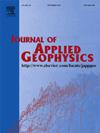Applicability of Growth inversion in microgravimetry for archeological prospection and sinkhole hazard detection: Jur, Koš and Senec case studies
IF 2.2
3区 地球科学
Q2 GEOSCIENCES, MULTIDISCIPLINARY
引用次数: 0
Abstract
The applicability and benefits of the Growth inversion methodology in near-surface geophysics, specifically microgravimetry, is demonstrated here by three case studies from the realm of archeological prospection and sinkhole hazard detection. We use the GROWTH-23 package to arrive at heterogenous source body models and GROWTH-dg to produce homogenous models. We took existing gravity data, namely local gravity anomalies or residual complete Bouguer anomalies, from three case studies and inverted them using the Growth approach. We analyzed the choice of proper values of the individual adjustable Growth inversion parameters for the individual near-surface Growth solutions. The obtained best-recovery Growth models were compared with and validated against the existing interpretations of the same microgravimetric data sets. Lessons were learned from these comparisons regarding the settings of the individual adjustable Growth parameters. The first case study is from the field of archeological prospection and regards the microgravimetric detection of medieval tombs, crypts, and buried foundations in a church. The second case study deals with detection of surface collapse and sinkhole hazard associated with shallow underground mining. The third case study targets sinkhole hazard in an urban area stemming from unknown cavities such as cellars. All in all, the application of the Growth inversion in these cases proved successful and has demonstrated its benefits.

求助全文
约1分钟内获得全文
求助全文
来源期刊

Journal of Applied Geophysics
地学-地球科学综合
CiteScore
3.60
自引率
10.00%
发文量
274
审稿时长
4 months
期刊介绍:
The Journal of Applied Geophysics with its key objective of responding to pertinent and timely needs, places particular emphasis on methodological developments and innovative applications of geophysical techniques for addressing environmental, engineering, and hydrological problems. Related topical research in exploration geophysics and in soil and rock physics is also covered by the Journal of Applied Geophysics.
 求助内容:
求助内容: 应助结果提醒方式:
应助结果提醒方式:


